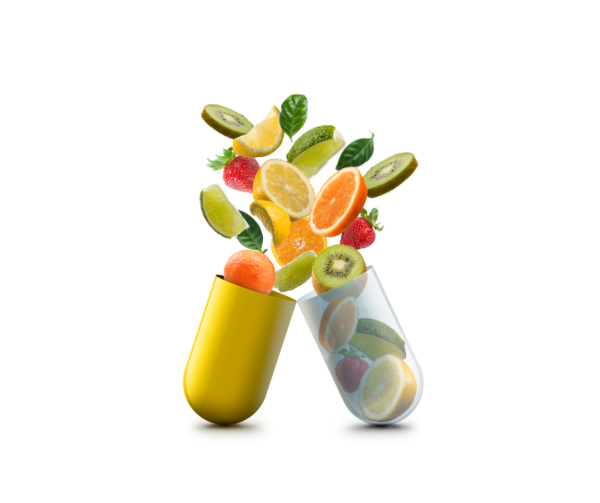How are vitamins administered?
There are four main administration methods: intravenous, intramuscular, intradermal and subcutaneous injections. Here, at YuBoost, we use the first two to deliver vitamins, minerals (magnesium, zinc) and glutathione (natural antioxidant). Each type of injection has its advantages and disadvantages. As such, it’s vital for the healthcare professional to adapt to the substance to be injected and the absorption rate required.

What differences exist between the various types of administration?
Intradermal (ID) injections are given in the middle layer of the skin, called the dermis, whilst subcutaneous (SC) injections are given in the hypodermis, i.e. the subcutaneous tissue above the muscles. These two techniques enable small amounts of product to be administered. Intramuscular (IM) injections are carried out on muscle tissue, which is highly-vascularized, whilst intravenous (IV) injections are applied directly into the bloodstream. The latter two administration methods promote rapid absorption of the substance.
Intradermal and intravenous injections are generally given in the forearm or arm, whilst intramuscular injections are administered to the deltoid, thigh or buttock muscles. Subcutaneous injections are generally administered on the outside of the thigh, although they can also be given on the inside of the arm, in the supraspinatus and infraspinatus areas of the shoulder blade or in the abdominal region
What are the advantages of the different types of injection?
Intradermal injections are perfect for triggering an intradermal reaction, as part of screening for diseases such as tuberculosis, or for performing allergy sensitivity tests. Subcutaneous injections are generally not very painful and are suitable for administering products that require slow absorption, such as painkillers, vaccines or insulin. The small amount of product means that, in some cases, patients can administer the injection themselves. Intramuscular and intravenous injections are the methods of choice for rapid, effective absorption of the substance, as they’re respectively administered to highly-vascularized tissue and directly into the bloodstream.
What are the disadvantages of the different types of injection?
ID and SC injections have a slower absorption rate than IV and IM injections. On the other hand, the latter should be avoided when administering products that need to be assimilated slowly and substances in small or very small amounts. Moreover, intravenous injections require the patient to be lying down; this is also the case for specific intramuscular injections, whilst the other injection methods are performed while the patient is seated. A number of risks should also be kept in mind: IM injections, as such, may cause a haematoma and require particular vigilance with regard to certain nerves, based on the area injected. Care should also be taken to ensure no air is injected during IV therapy, to avoid the risk of gas embolism. The professional will also keep check for any blood backflow when administering IV and IM injections. Some patients may feel pain when a subcutaneous injection is given.
What technique is used for vitamin injections?
Food is the primary way for our body to absorb vitamins. Injecting vitamins is a solution for supplementing deficiency, which is common among people deprived of sleep or who’ve just come back from a long trip. In such situations, our body tends to consume more vitamins, so this leads to a deficiency. Vitamin deficiencies are also fairly common in cases of very frequent or highly-intense sporting activity, as well as post-medical interventions such as surgery and during chemotherapy.
Here, at YuBoost, we mainly use intravenous injections to administer vitamins, minerals (magnesium, zinc) and glutathione (natural antioxidant) to our patients. This technique ensures rapid, effective assimilation: 100% of vitamins are absorbed by our body as they’re injected directly into the bloodstream. We also use intramuscular injections for our Boost infusions.






